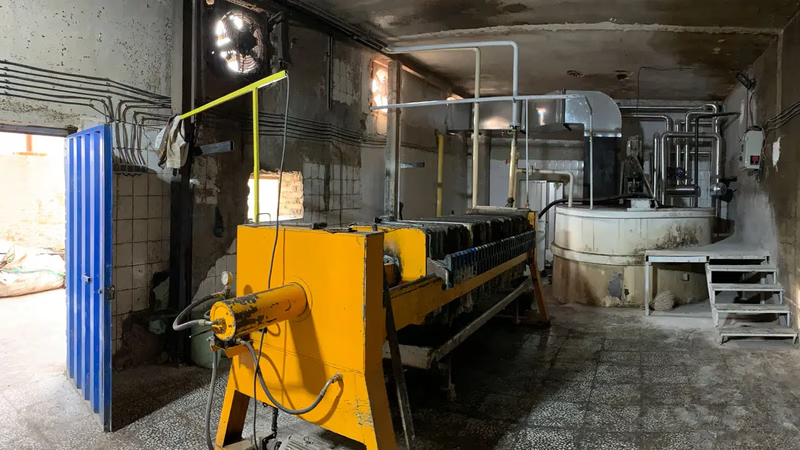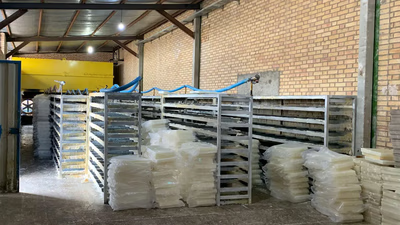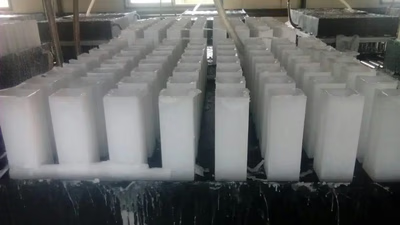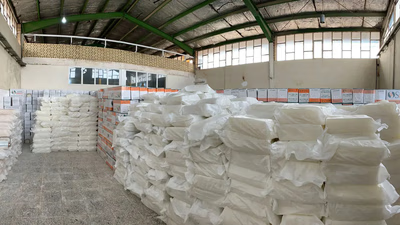
Paraffin production process in the Middle East trade market.
Paraffin oil was discovered in the 19th century by a German scientist named Karl von Richen Bach. This happened when he was working to increase the efficiency and refining of petroleum compounds in the petrochemical industry. Paraffin was used because it was much cleaner and safer than conventional oils in the candle industry. The discovery of paraffin gave a new impetus to the production of candles, meat packaging and the oil industry in the early twentieth century. Paraffin, which is a chemical substance, is made by refining a substance called slack wax, which is one of the petroleum derivatives and is also used in the production of engine oil. This substance initially has a lot of fat in it, which in a separate process, they separate these fats.
In the early 1800s, chemists and scientists began to experiment with the distillation of crude oil, a byproduct of the petroleum industry. Through these experiments, they discovered a waxy substance that separated from the oil during the distillation process. This substance was named "paraffin" due to its lack of affinity for other substances.The commercial production of paraffin wax began in the mid-19th century. The Scottish chemist James Young is credited with being one of the pioneers in paraffin production. In the 1850s, Young developed a method to extract paraffin wax from crude oil and established the first commercial paraffin wax factory in Scotland.
Over time, refining and purification processes for paraffin wax were improved. Initially, the crude oil was distilled, and the resulting wax was further processed to remove impurities, such as oil, sulfur, and color. The refinement methods involved techniques like solvent extraction, chilling, and filtration. The production of paraffin wax expanded rapidly during the industrial revolution. As the demand for lighting increased, paraffin wax became a popular replacement for traditional sources of light, such as tallow candles and whale oil lamps. The invention of the kerosene lamp in the mid-19th century further fueled the demand for paraffin wax.
In the late 19th and early 20th centuries, advancements in technology and refining processes improved the quality and efficiency of paraffin production. The introduction of vacuum distillation and hydrocracking techniques led to the production of higher-quality paraffin wax with improved melting points and characteristics. Today, paraffin wax is primarily produced as a byproduct of the petroleum refining industry. Crude oil undergoes a refining process, which involves distillation, solvent extraction, and additional purification steps to separate the waxy paraffin compounds. The resulting paraffin wax is then further processed, refined, and packaged for various industrial and consumer applications.
James Young, a Scottish chemist, played a significant role in the early development of paraffin production. In addition to establishing the first commercial paraffin wax factory, he also patented several refining processes and made important contributions to the understanding of petroleum distillation. Young's work paved the way for the growth of the paraffin industry. As the production of paraffin wax increased, its applications expanded beyond lighting. In the late 19th century, paraffin was used extensively in the manufacture of matches, as a sealing material for food preservation, and in the production of phonograph records. Its low melting point and ability to solidify again made it useful in molding and casting processes.
The discovery and production of paraffin wax were closely tied to the development of the petroleum industry. As the demand for petroleum products grew, refineries became more efficient in separating the various components of crude oil, including paraffin. The emergence of the petrochemical industry in the 20th century further expanded the range of products derived from petroleum, including waxes. Technological advancements continued to improve the refining processes for paraffin wax. The introduction of catalytic cracking in the mid-20th century allowed for the production of specific types of paraffin waxes with desired properties, such as higher melting points or enhanced flexibility. These advancements led to the production of specialized waxes for different applications.
In recent years, there has been a growing concern about the environmental impact of petroleum-based products, including paraffin wax. This has led to increased interest in alternative sources of waxes, such as natural and renewable vegetable waxes like soy wax, palm wax, and beeswax. These alternatives are often marketed as more sustainable and environmentally friendly options. The wax industry has diversified beyond paraffin wax. In addition to petroleum-based waxes, there are now various synthetic waxes available that offer specific properties for different applications. For example, microcrystalline wax, derived from petroleum, has a higher melting point and is often used in industries like cosmetics, adhesives, and coatings.
-

Paraffin wax is a versatile material with numerous applications across various industries. In candle making, it is favored for its clean burning properties and ability to retain scents. Additionally, it serves as a food-grade coating that enhances the appearance and shelf life of fruits and candies. In cosmetics, paraffin wax is used in products like lip balms and lotions to provide moisture and improve texture. Its utility extends to art projects, where it is employed in encaustic painting and mold-making. Paraffin wax also plays a crucial role in investment casting, providing precise patterns for metal castings. Furthermore, microcrystalline wax, a variant of paraffin, is utilized in adhesives and sealants due to its flexibility. The therapeutic benefits of paraffin wax are evident in spa treatments where it aids in heat therapy and skin moisturization.
Other industrial uses include serving as a lubricant, anti-mold agent, and waterproofing agent for fabrics. Its role in packaging materials enhances moisture resistance and sealing capabilities. Overall, paraffin wax"s diverse applications make it an essential component across multiple sectors. "
-

Paraffin is a group of waxy hydrocarbons derived from petroleum, primarily composed of long-chain alkanes. It exists in solid and liquid forms, with paraffin wax being the most recognized variant. Paraffin wax has a low melting point, making it ideal for applications such as candle production, skincare products, and food coatings. In the food industry, it enhances the appearance and shelf life of fruits and vegetables. Additionally, paraffin is used in packaging materials to improve moisture resistance. Beyond consumer products, paraffin plays a significant role in industrial processes including lubricants, electrical insulation, and manufacturing plastics and rubber products. It is also utilized in livestock feed to address digestive issues. The petrochemical industry extracts paraffin from oil or coal, classifying it into solid and liquid types based on application areas: food, industrial, and health. Its versatility extends across various sectors such as textiles, adhesives, cosmetics, and more.
-

The Middle East, rich in crude oil reserves, is a leading producer of paraffin wax, primarily derived from petroleum refining. Countries like Saudi Arabia, Iran, Iraq, Kuwait, and the UAE have established advanced refining infrastructures that enable efficient production of paraffin wax as a byproduct. The region"s vast resources ensure a steady supply of raw materials and allow for significant export capacities to meet global demand. The quality of paraffin wax varies based on refining techniques and feedstock composition, catering to diverse market needs. The competitive pricing and strategic geographical location of the Middle East facilitate easy transportation to international markets. This integration within the petroleum value chain enhances production efficiency and maximizes value from crude oil byproducts. As a result, the paraffin industry contributes significantly to foreign exchange earnings in the region while shaping global market dynamics through its substantial export volumes. "
-

Paraffin wax is available in various types, each tailored for specific applications across industries. Fully refined paraffin wax is the purest form, known for its high melting point and clarity, making it ideal for food coatings, cosmetics, and pharmaceuticals. Semi-refined paraffin wax retains some impurities and is used in products like crayons and rubber compounds. Microcrystalline wax offers flexibility and adhesion, suitable for adhesives and industrial coatings. Pattern wax is designed for investment casting, providing low melting points and dimensional stability for intricate designs. Container wax is formulated for container candles, ensuring good scent throw and burn performance. The market"s demand drives manufacturers to innovate and develop specialized formulations to meet diverse customer needs. Ongoing research enhances the properties of paraffin waxes, addressing challenges in niche applications while maintaining quality standards. "
-

Quality paraffin is determined by its intended use, with different industries requiring specific characteristics. For instance, in candle making, a lower oil percentage indicates higher quality, while lubrication applications may require the opposite. High-quality paraffin should be white, pure, and free from contaminants like oil and sulfur. It must have a consistent melting point for even performance and a clean appearance without discoloration or foreign particles. Odorless and smooth-textured paraffin is preferred, as strong odors may signal impurities. Reputable suppliers often ensure quality through testing and customer feedback is crucial for assessing product reliability. Transparency and stability over time are also key indicators of good paraffin wax. It should burn cleanly with minimal residue and maintain consistent performance across batches.
Compatibility with other materials is essential for specific applications, particularly in candle making or cosmetics. Safety standards must be met when using paraffin in direct contact with skin or food. Ultimately, choosing a reliable supplier who balances quality with cost is vital for obtaining high-quality paraffin wax.
-

Paraffin oil, discovered in the 19th century by Karl von Richen Bach, revolutionized the candle industry due to its cleaner and safer properties compared to traditional oils. The commercial production of paraffin wax began with Scottish chemist James Young, who developed extraction methods from crude oil. As demand for lighting increased during the industrial revolution, paraffin wax became a popular alternative to tallow candles and whale oil lamps. Advancements in refining processes, such as vacuum distillation and hydrocracking, improved the quality of paraffin wax. Today, it is primarily produced as a byproduct of petroleum refining through distillation and purification techniques. The applications of paraffin wax have expanded beyond lighting to include food preservation, molding, and casting. However, environmental concerns regarding petroleum-based products have led to interest in alternative wax sources like soy and palm waxes. The industry has also diversified with synthetic waxes that cater to specific needs across various sectors.






